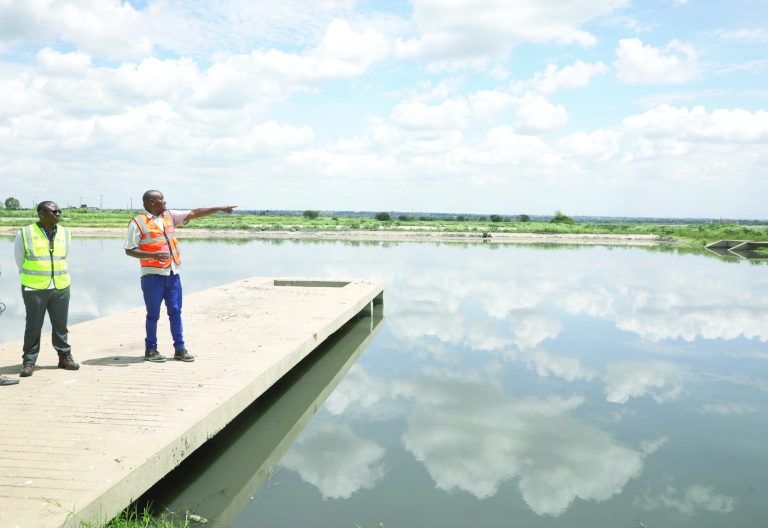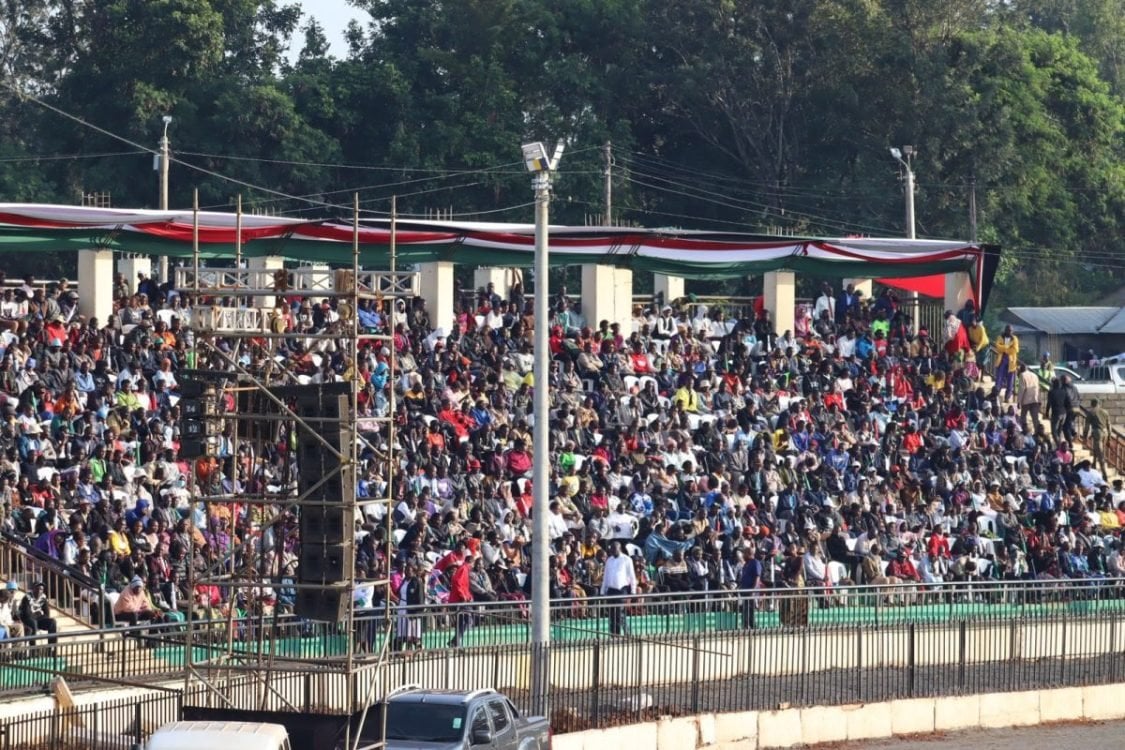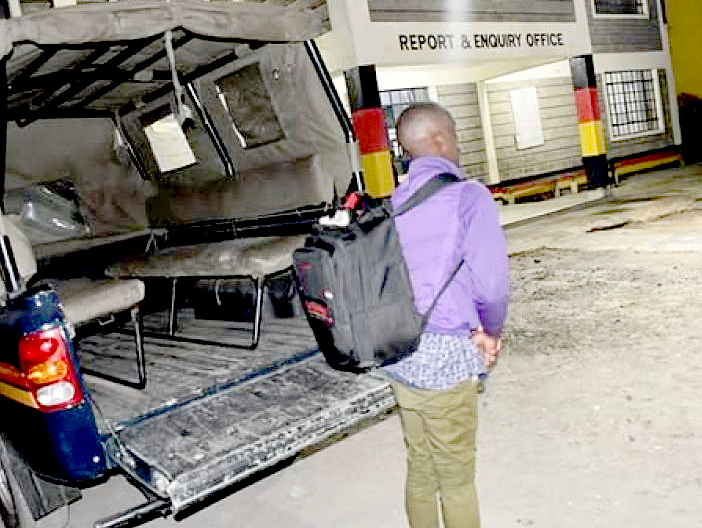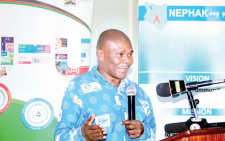Dandora plant’s flow from foul sludge to fresh smelling water

It is 1pm on Friday afternoon and the heat rays from the sweltering sun hit the tarmac on Kangundo Road hard, going up in a gentle, rhythmic sway. Nearby, Mama Shiku’s fish and ugali eatery is swarming with customers.
Two years ago, she could count the number of customers who came in for lunch in one month, but the latest turn of events is a huge economic blessing for Mama Shiku who now beams with happiness.
Mama Shiku’s joy has a lot to do with the Dandora Estate Wastewater Treatment Plant in Ruai, where the ongoing expansion programme is slowly but gradually paving way for increased sewerage coverage in Nairobi and adjacent towns. Just a couple of years ago, the irritating smell could turn away even the hungry of the hungriest.
“Hapa kulikua na shida kubwa. Ile harufu ilikua inatoka hapo ndani, ilitufukuzia wateja kabisa (It was a huge problem in this area with the kind of smell that came from the plant),” Mama Shiku says.
Weighed down by an ever-expanding urban population, Nairobi’s sewerage system is currently struggling to sustain the six million daytime population and around four million at night. A three-day torrential downpour a week ago saw sewers burst open and pour out faecal matter on the city’s roads and streets, with the attendant risk of waterborne diseases.
In response, the government partnered with the African Development Bank (AfDB) in a close to Sh2 billion deal, which gave birth to Phase II of the Nairobi Rivers Rehabilitation and Restoration Programme: Sewerage Improvement Project (NaRSIP II).
Expanded treatment
The project scope entails construction of additional seven ponds to treat an additional 20 million litres of waste water per day. It also involves construction of a 13-kilometre masonry boundary wall to secure Dandora Estate Wastewater Treatment Plant and protect the land from encroachment.
According to NaRSIP II Lot 1 resident engineer Duncan Kamau, the treatment of the wastewater involves two processes; physical and biological treatment which is currently under expansion.
“Before, the improvement was done, the plant could take in around 160,000 cubic metres per day, but at the moment, with the ongoing expansion, this facility is now able to take in 320,000 cubic metres per day,” he tells journalists during a media tour of the plant.
Notably, during this visit no one is wearing a face mask, to keep off putrid stenches.
Before the improvement, there were challenges with the equipment at the inlet networks, where the raw sewage is directed to the plant for screening and large materials, such as pieces of cloth or sack, are removed.
“Under the physical treatment, the wastewater at the inlets is passed through coarse, intermediate, fine screens, dirt trap and compactor to remove large materials from the wastewater,” Kamau says.
Before the improvement however, all the equipment had failed and all that solid waste used to go to the anaerobic ponds where it interfered with the depth of the pond, reducing the depth and compromising performance. All the ponds, the anaerobic ponds were almost filled up with silt. One of the components of the project according to Kamau, was to de-silt all the ponds, which has already been completed.
In the biological treatment, there are anaerobic ponds, then facultative ponds. And then finally, the maturation ponds, from where water achieves some form of quality as captured in the Environmental Management and Coordination Act (EMCA), 1999.
“The process takes like about 55 days from the time the water gets in to the time that the water gets out,” Kamau reveals.
The first phase of this water treatment was done in 1975. It consisted of the old inlet networks and Phase 1 consisted of series 1 and series 2. Then around 1985, the second phase of the series was started, which consisted of the new inlet networks, series 3, 4, 5, 6 up to 8. However, recently confronted with the burgeoning population of the city, the government mooted Phase II of the expansion.
Outpaced infrastructure
The NaRSIP II was approved on December 10, 2018. The project was officially launched on September 12, 2024, with President William Ruto during the Nairobi River Regeneration Project. The AfDB financed the project for a four-year implementation period from 2019 to 2023, according to the Athi Water Works Development Agency (AWWDA).
According to Eng. James Mature, deputy director sewerage and sanitation at the AWWDA, the growth of Nairobi city has surpassed the rate at which infrastructure is developed to meet the needs of the growing population.
“Urbanisation, population growth, and industrialisation have outpaced the existing infrastructure and resulted in pollution on the following rivers; Nairobi, Mathare, Gitathuru, Ngong, Athi, Kamiti and Kiu,” he says, noting that the rivers are heavily polluted from both domestic and industrial waste.
The existing sewer network infrastructure covers an approximate area of 208 kilometre-squared with a total coverage of 50 per cent.
“NaRSIP II has been a follow-up of NaRSIP I, which basically saw construction of the major trunk lines along our rivers; Narobi, Ngong’ and Mathare, and now NaRSIP II we have been able to connect a lot of homes more than 20, 000 connections, translating to almost 1 million more people draining sewer into the system,” Muturi says.
He says that there has been a transformation in the estates that are connected into the system, case in point being Githurai 44, Mwihoko, Githurai 45 and Kahawa West.
“NaRSIP II is almost complete, at 90 per cent in terms of increasing the treatment capacity of this plant. However, we still have some components that are ongoing, we are still connecting more people to the system,” he adds.














